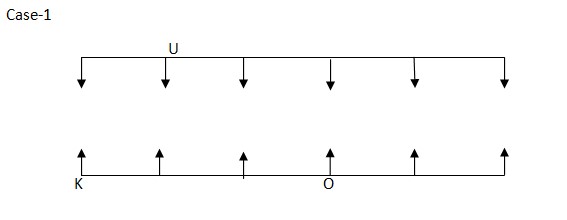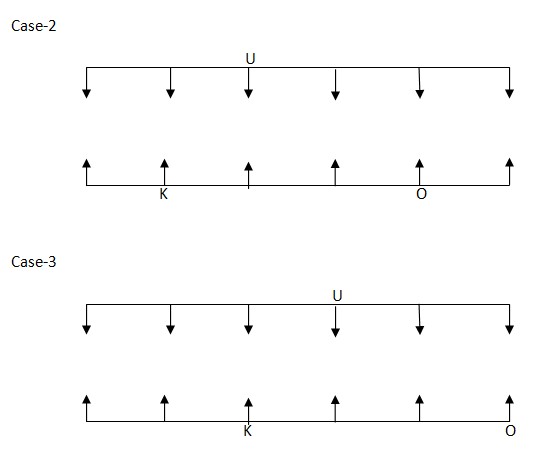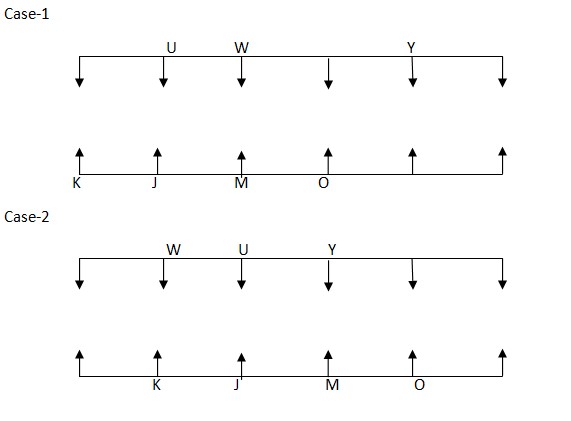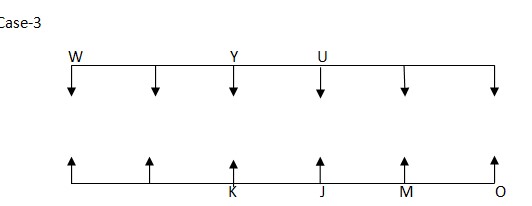Question
Who among the following pair of persons are sitting
opposite to each other? I. WM II. YN III. UM IV. VO Study the following information carefully and answer the below questions Twelve persons are sitting in a parallel row and opposite to each other. In row1- U, V, W, X, Y, and Z face the south. In row2- J, K, L, M, N and O face the north but not necessarily in the same order. U sits opposite to the one who sits second to the left of O. Only two persons sit between K and O. K sits to the left of O. The number of persons sits to the left of U is the same as the number of persons sit to the right of Y. W sits second to the right of Y. J sits immediate left of M, none of them sits at end of the row. L sits opposite to the one who sits second to the left of Z. X and Y are not immediate neighbours.Solution
We have, U sits opposite to the one who sits second to the left of O. Only two persons sit between K and O. K sits to the left of O. From the above condition, there are three possibilities. 
 Again we have, The number of persons sit to the left of U is the same as the number of persons sits to the right of Y. W sits second to the right of Y. J sits immediate left of M, none of them sits at end of the row.
Again we have, The number of persons sit to the left of U is the same as the number of persons sits to the right of Y. W sits second to the right of Y. J sits immediate left of M, none of them sits at end of the row. 
 Again we have, L sits opposite to the one who sits second to the left of Z. X and Y are not immediate neighbours. From the above condition, case2 and case3 get eliminated. Case1 shows the final arrangement.
Again we have, L sits opposite to the one who sits second to the left of Z. X and Y are not immediate neighbours. From the above condition, case2 and case3 get eliminated. Case1 shows the final arrangement. 
What the ratio of males who read only ‘The Hindu’ to the Female who read all three newspaper?
In which of the following two other states the number of voters is same as that of voters voting in Gujarat and Delhi?
The Sales division employs 20% of the total workforce. Junior employees make up 50%, Mid-Level employees 30%, and the rest are Senior employees. Calcula...
What is the difference between the number of Junior and Senior employees in the IT division?
The Speed of two cyclists follow a ratio of 9:5. If the slower cyclist covers a distance of 480 km in 6.4 hours, determine the time it takes for the fas...
What is the total number of wallets sold by all stores together on Wednesday?
The number of 2 BHK flats in apartment R is what percent of total flats in apartment P?
Number of laptops sold by shop C is how much more than the number of mobile phones sold by shop D?
Find the difference between number of mobile phones sold by shopkeeper A and shopkeeper B.
The number of females travelling by car in city B is what percent of the number of females travelling by car in city A?
Relevant for Exams:



